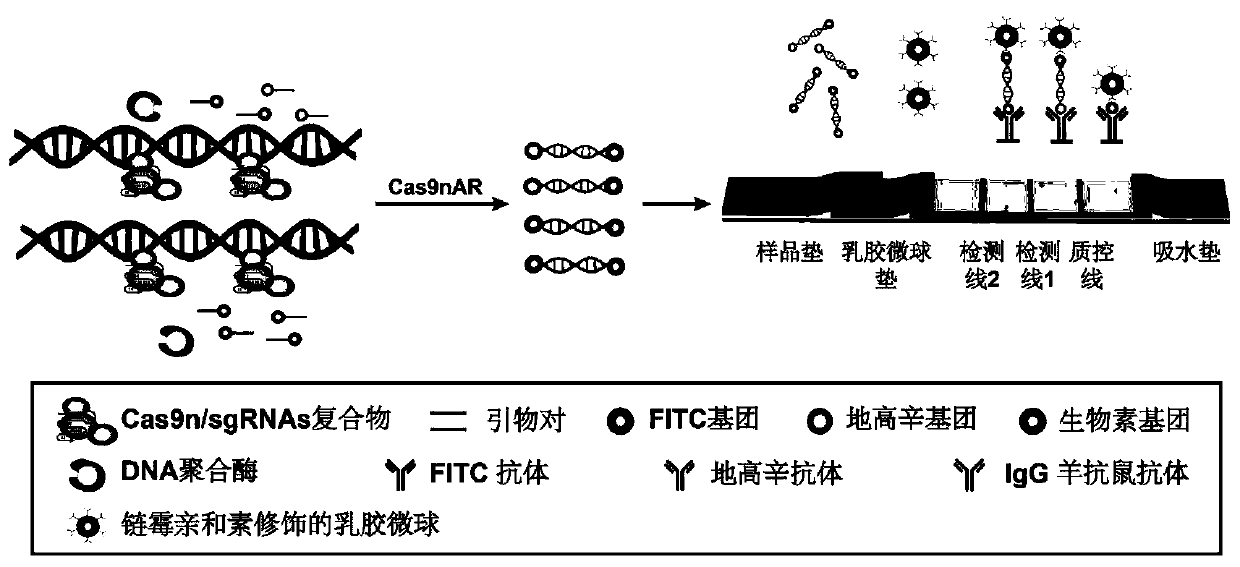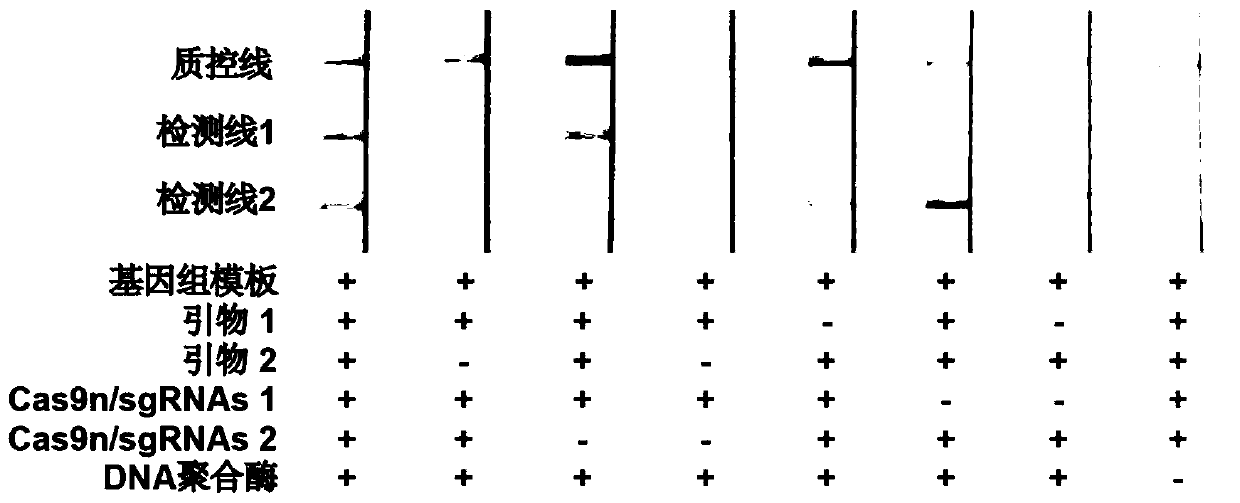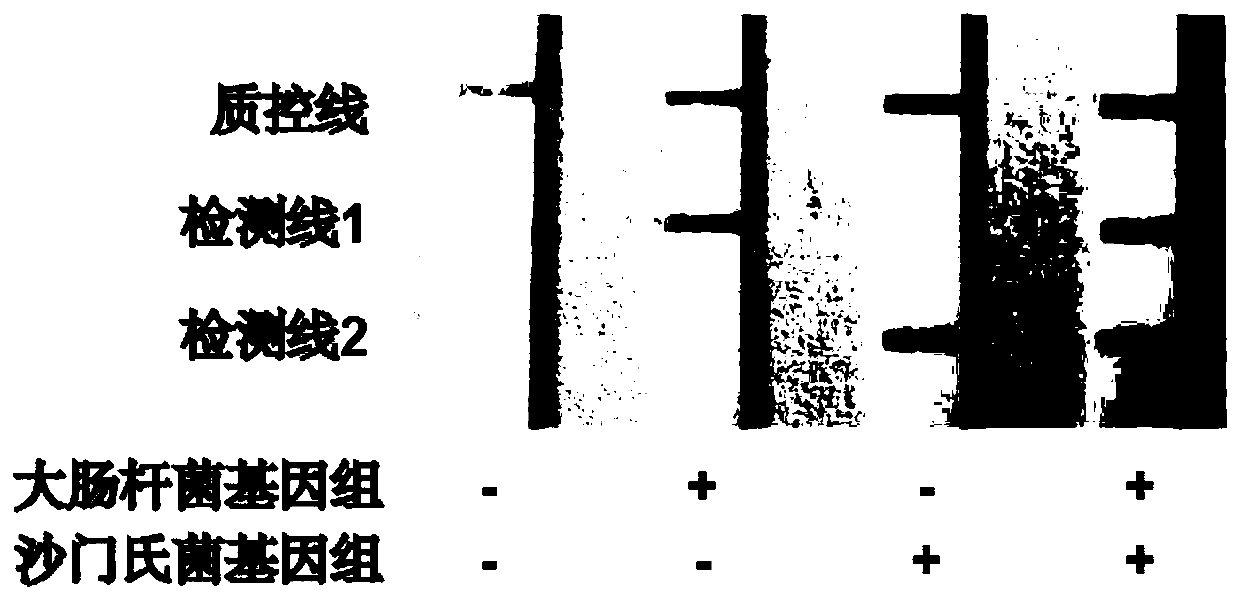Immunochromatography multiple gene detection method based on Cas9 nucleic acid isothermal amplification
A technology of isothermal amplification and immunochromatography, which is applied in the fields of biotechnology and medical testing, can solve the problems of high cost, single detection object, and low universality, and achieve the advantages of simple operation, short detection time, and instant readable results Effect
- Summary
- Abstract
- Description
- Claims
- Application Information
AI Technical Summary
Problems solved by technology
Method used
Image
Examples
Embodiment 1
[0037] Embodiment 1 Multiple immunochromatographic diagnostic test strips detect Escherichia coli and Salmonella
[0038] In this example, the DNA amplification template comes from the genome or plasmid extracted from the kit, the primers are commissioned to be synthesized by a biotechnology company, the sgRNA is obtained by in vitro transcription, and the 20 bases at the 5' end of the sgRNA are the seed sequence complementary to the prespacer.
[0039] refer to figure 1 The detection principle of the immunochromatographic multiplex gene Escherichia coli and Salmonella is shown:
[0040] (1) Extract the genomic DNA to be detected from the sample to be detected: Escherichia coli ATCC35128 and Salmonella ASL1174 are cultured on a shaker in LB liquid medium until the exponential growth phase (OD=0.4-0.6), and 1 ml of the bacterial liquid is taken to extract the bacteria DNA (target DNA),
[0041] (2) Using the target DNA as a template, perform multiple isothermal amplification:...
Embodiment 2
[0056] The difference between Example 2 and Example 1 is that the immunochromatographic test paper is different, the sample pad and the latex microsphere pad use polyester cellulose membrane, the temperature of the water bath in the multiple isothermal amplification process is 42 ° C, and the rest of the process is completely the same. The detection result of this embodiment is equivalent to that of Embodiment 1, and will not be repeated here.
Embodiment 3
[0058] Escherichia coli and Salmonella were mixed into milk, stored overnight at room temperature, and then used as samples for experimental testing, and the testing method was the same as in Example 1. like Figure 5 As shown, the method still has good specificity for bacteria in real food samples. like Image 6 As shown, the method has a detection limit of 100 colonies / mL for bacteria in real food samples.
PUM
 Login to View More
Login to View More Abstract
Description
Claims
Application Information
 Login to View More
Login to View More - R&D
- Intellectual Property
- Life Sciences
- Materials
- Tech Scout
- Unparalleled Data Quality
- Higher Quality Content
- 60% Fewer Hallucinations
Browse by: Latest US Patents, China's latest patents, Technical Efficacy Thesaurus, Application Domain, Technology Topic, Popular Technical Reports.
© 2025 PatSnap. All rights reserved.Legal|Privacy policy|Modern Slavery Act Transparency Statement|Sitemap|About US| Contact US: help@patsnap.com



